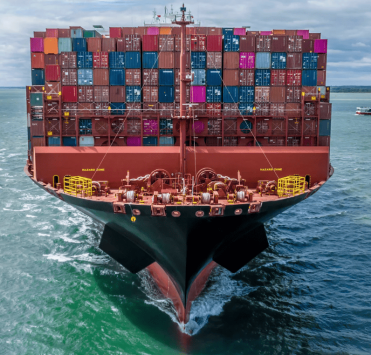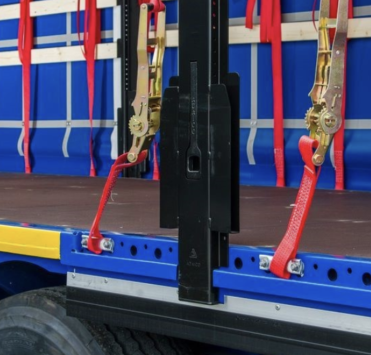Dangerous goods in maritime logistics: what is important to know about transportation and clearance

Transporting dangerous goods by sea is one of the most popular and at the same time complex tasks in international logistics. It requires strict compliance with the requirements established by the International Maritime Organization (IMO), as well as taking into account the national peculiarities of some countries. Below we will consider what role the IMDG Code plays, how dangerous goods are labelled and packaged, why IMO certification is so important, as well as reveal the nuances of customs clearance of dangerous goods and peculiarities of delivery of hazardous substances to Ukraine.
Dangerous goods: classification and general requirements
What are dangerous goods?
Dangerous Goods’ is usually understood as substances and materials that pose a potential threat to human health, the environment, a vessel or other cargo if improperly handled. According to the dangerous goods classification adopted in the IMDG Code, all substances are divided into 9 classes (Class 1-9). For each class, specific characteristics of the cargo are taken into account - explosive properties, radioactivity, toxicity, corrosiveness, etc.
Importance of classification
- Correct identification:correct identification of the hazard class ensures that the correct transport mode is selected.
- Compliance with international regulations: incorrect identification of the hazard class leads to a breach of the rules for the carriage of dangerous goods by sea, resulting in heavy fines and risks for the ship, crew and the environment.
IMDG Code: the basis of international regulation
TheIMDG Code (International Maritime Dangerous Goods Code) is a set of mandatory rules and regulations developed by the International Maritime Organisation (IMO) for the safe carriage of dangerous goods by sea. The code contains:
- Detailed requirements for the packaging of dangerous goods (including authorised materials).
- Instructions on the labelling of dangerous goods (classes, additional symbols, UN-numbers).
- Recommendations for storing and segregating different types of dangerous goods on board the ship.
Main documents and certificates
- Dangerous Goods Declaration (DGD) - a declaration confirming that the cargo is classified, packed and labelled in accordance with the IMDG Code.
- Packaging Certificate - a document that confirms that the packaging meets all requirements.
- IMO certification is a general term that includes various forms of confirmation that the cargo and ship are compliant.
Packaging and labelling of dangerous goods: key principles
Packaging of dangerous goods
Dangerous goods packaging must fulfil a number of stringent requirements in terms of:
- Airtightness and impact resistance.
- Fire and pressure resistance.
- Compliance with the characteristics of a particular class of cargo (explosives, gases, corrosive or radioactive materials).
For multimodal transport, European and other international regulations (e.g. ADR for road transport) are additionally taken into account.
Labelling of dangerous goods
Correct labelling of dangerous goods includes:
- Clear, easy-to-read labels with the class of hazard.
- Indication of the UN-number of the cargo.
- Warning symbols (flammable, toxic, corrosive, etc.).
- Additional inscriptions for quick recognition of the cargo in the event of an emergency.
IMO certification and the role of the Dangerous Goods Declaration (DGD).
Why certification?
IMO certification confirms that your company and the shipper of the dangerous goods comply with all prescribed regulations for the carriage of dangerous goods by sea:
- Vessel requirements (design, equipment).
- Conformity of containers or tank containers.
- Training of personnel.
- Correct execution of documentation.
Without such certificates, carriage may be prohibited and the cargo delayed or returned to the sender.
Dangerous Goods Declaration (DGD)
The Dangerous Goods Declaration (DGD) is a key document where the shipper declares:
- Compliance of the cargo classification with IMDG Code requirements.
- Proper packaging and labelling of dangerous goods.
- Compliance with all safety measures during transport.
If there is no correct DGD or if there are inaccuracies, the cargo will not be accepted for carriage.
Dangerous Goods Regulations for the Carriage of Dangerous Goods by Sea: Controls and Responsibilities
Control at all stages
To avoid accidents and fines:
- Ensure that the shipper has correctly completed the Dangerous Goods Declaration (DGD).
- Check the integrity of the packaging and correct labelling.
- Ensure that the necessary certificates and authorizations are in place.
- Organize control checks at all intermediate points along the route, especially when changing transport in multimodal schemes.
Responsibilities of transport participants
- The carrier is responsible for the safety of the cargo and compliance with the rules of maritime transport of dangerous goods on board the vessel.
- The forwarder coordinates the logistics chain and ensures the correctness of the accompanying documentation.
- The shipper must ensure that dangerous goods are correctly classified, packaged and labelled.
Need help in transporting dangerous goods?
Contact our company and we will take care of all the nuances of logistics: from determining the class of hazard and preparation of documentation to the safe delivery of cargo to Ukraine or anywhere in the world. Our experience and competence will guarantee smooth and legal carriage, and you will be able to focus on the development of your business.









